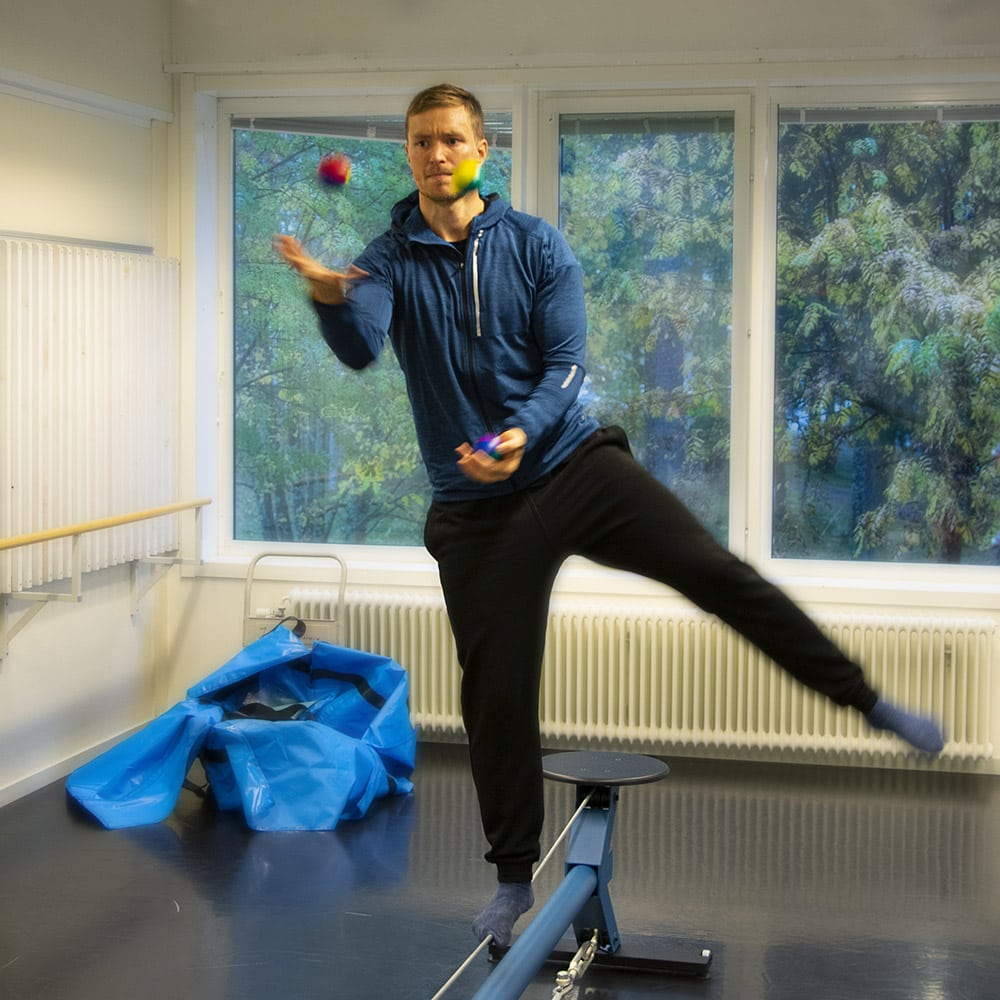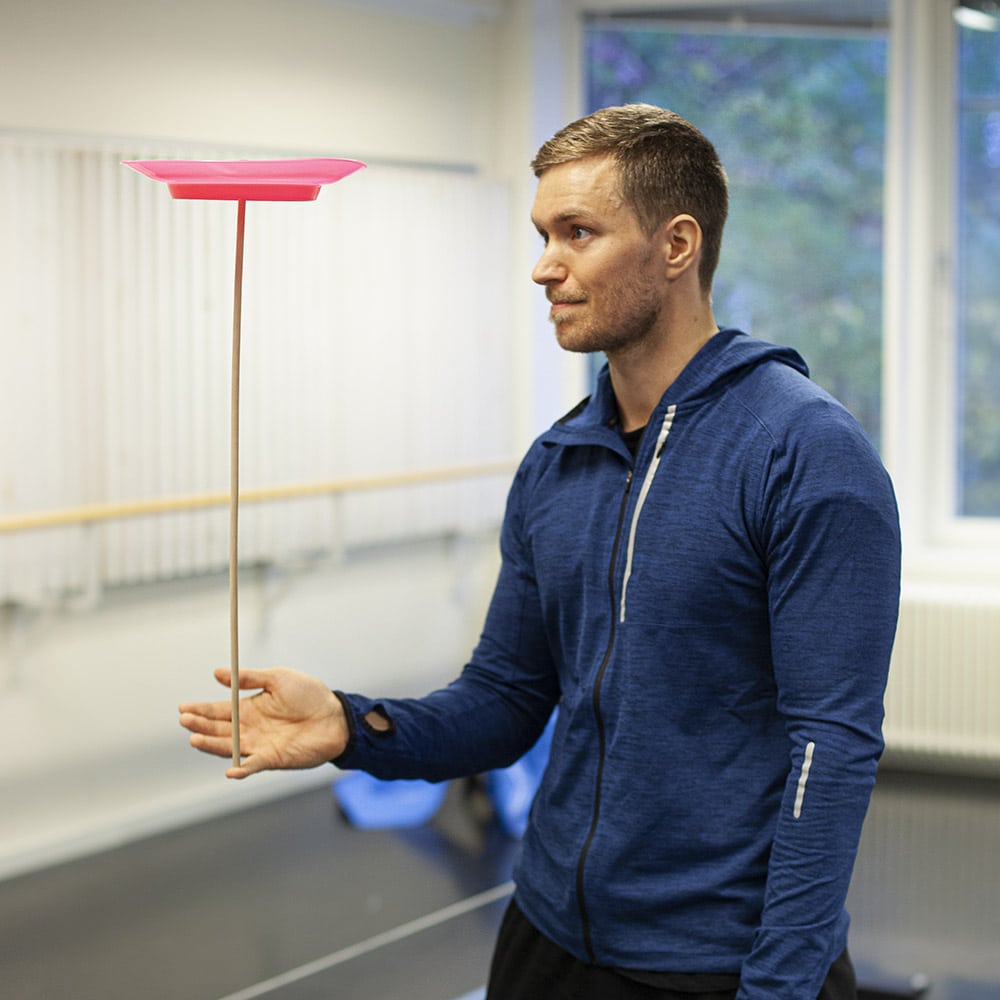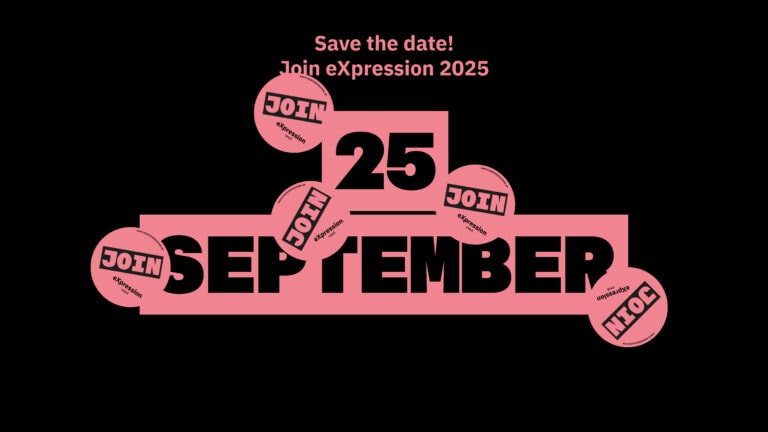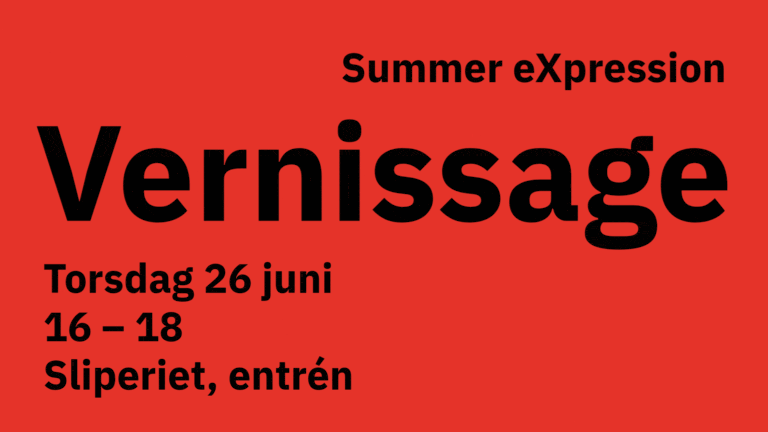Kaaos Kaamos är den multikulturella cirkusgruppen som etablerar sig i Umeå. Gruppen har grundats och drivs av Umeåfödde Erik Glas och hans fyra kollegor från Sverige, Finland, Tyskland och Frankrike. Tillsammans bygger de mänskliga torn och kastar varandra i luften – med ambitionen att skapa en modern cirkusföreställning i ett traditionellt cirkustält.
Det var när föreställning Traces med cirkuskompaniet 7 Fingers besökte Umeå som Erik Glas för första gången fick upp ögonen för cirkus. Artisternas akrobatik framstod övermänsklig, de var superhjältar i Eriks ögon. Dagen efter föreställningen träffade han artisterna som då framstod som vanliga människor som övat länge för att lära sig dessa färdigheter. Kort därefter inledde han sin cirkuskarriär genom att söka till nycirkusgymnasiet i Stockholm – tanken att lära sig superkrafter levde kvar i många år men har svalnat med åren.
Efter tre år på nycirkusgymnasium och fyra år på högskola driver nu Erik tillsammans med fyra kollegor nycirkuskompaniet Kaaos Kaamos, som skapar och spelar cirkusföreställningar samt håller kurser i cirkus.
Vi jobbar med par-akrobatik, det vill säga att vi bygger mänskliga torn och kastar varandra i luften. Vårt mål har varit att skapa en mänsklig cirkus, inte superhjältecirkus. Rätt ofta handlar det om att inte ta oss själva på för stort allvar. Vi vill att rörelseglädjen genomsyrar allt vi gör, alltifrån uppträdanden till lektioner, säger Erik.
Vännerna träffades under skoltiden där de lärde sig om dramaturgi och utvecklade fysiska färdigheter. Trots att de inte kunde så mycket om företagande slog de sig samman och tog fram en ny föreställning, sen fortsatte det.

Förutom i Europa har kompaniet turnerat i Brasilien och spelat över 70 föreställningar. Enligt Erik var den första stora föreställningen på L’européenne de cirques i Toulouse i oktober 2017 och efter det på Subcase i Stockholm i november 2017. Det var två av Europas största nycirkusshowcases och det blev en språngbräda till fler jobb.
Kaaos Kaamos har även deltagit i EU-projekt, Circus Incubator, där cirkusartister från Sverige, Frankrike, Brasilien och Canada mötte arrangörer och producenter från samma länder. Det ledde till ett samarbete med regissören Albin Warette, och han hjälpte dem med många nya kontakter.
Vikten av samarbete
Att samarbeta med andra cirkusartister och regissörer har varit avgörande för kompaniet, men samarbete har även en viktig roll inom kompaniet.
Det är centralt för allt vi gör. Par-akrobatik handlar om att den ena personen tar ansvaret för balansen och den andra slutar att balansera. Det är inte något man slår av och på med viljekraft utan är reflexer som måste nötas in i kroppen. Så fort vi har svårt att lita på varandra överförs det till hur våra kroppar reagerar.
Vi har varit osams flera gånger, speciellt under långa intensiva turnéperioder när vi levt nära varandra. Då krävs det att vi sätter oss ner och pratar. Det är viktigt för alla att vi hanterar konflikter när de uppstår. Ibland har vi tagit in någon extern person som suttit med under våra samtal och hjälpt oss.
Under ett akrobatiktest i skolan ådrog sig Erik en hälseneruptur. Med stor vilja att komma tillbaka till cirkusen blev rehabiliteringen för aggressiv och hälsenan gick av igen. Totalt resulterade det i ett halvår utan att kunna gå.
Skadan skapade många existentiella frågor kring vem jag var och vad mitt värde var utan mina cirkuskunskaper. Det blev en tid för mycket reflektion. Så här i efterhand var det nog värt det, min värld blev mycket större.
Ibland ifrågasätter han sig själv om han ska satsa helt på Kaaos Kaamos. Kompaniet innebär mycket administrativt arbete och den totala arbetsbördan är väldigt stor i förhållande till den ekonomiska lönen. Trots att han vaknat många gånger av skrikande träningsvärk och blåmärken känner han inte att han nått sin gräns för hur duktig han kan bli, och det sporrar honom att fortsätta. Dessutom har gruppen varit avgörande.
Det är en samling människor jag bryr mig väldigt mycket om, och när vi arbetar tillsammans känns inte arbetsbördan tung, då är det ett äventyr och en utmaning att övervinna.

En arbetsvecka som cirkusartist i kaaos kaamos
Hur en arbetsvecka ser ut varierar beroende på om Kaaos Kaamos är i processen att skapa nytt material, är ute och uppträder eller om det är en ”vanlig” kontorsvecka.
En vanlig arbetsvecka innehåller cirka 10 timmar träning, 20 timmars administrationstid och 10 timmar lektionstid.
När de utvecklar nya föreställningar är veckan fördelad på 20 timmar träning, 15 timmar improvisation och skapande samt 10 timmar planera och skriva.
Däremellan fylls ofta tiden med att prata om vad de gjort och gemensamt visionera om nya idéer. Det brukar bli väldigt intensiva perioder.
Spelningar brukar innebära att kompaniet åker till en plats 1-5 dagar innan första spelningen (beroende på hur länge sedan det var man tränat tillsammans) och tränar och repeterar.
Föreställningsdagen startar 4 timmar innan själva föreställningen. Under den tiden värmer de upp, kör igenom de svårare tricken och ställer i ordning scenen. Sedan byter de om och gör sig redo att möta publiken innan showen drar igång.
Etablering i Umeå
Efter att basen för Kaaos Kaamos roterat runt till olika platser runt om i världen är nu ambitionen att etablera cirkusgruppen i Umeå. Det blir två framstående verksamheter, en ny föreställning och en pedagogisk verksamhet.
Föreställningen blir en stor satsning. Vi tänker oss att turnera med ett traditionellt cirkustält med en modern cirkusföreställning. Det blir ett verk utan avgränsning mellan publik och artister där vi tillsammans skapar en alternativ värld att uppleva under en kväll.
Dessutom utökar kompaniet den pedagogiska verksamheten med kurser för barn och ungdomar som vill lära sig cirkus.
Att träna cirkus är bland det bästa man kan göra för att förbättra sina grundläggande motoriska färdigheter och rörelserikedom, eftersom det innefattar ett så brett spektrum av träning. Just nu verkar vi för att fler i Umeå ska få möjlighet att träna cirkus. Vi håller kurser och workshops med det långsiktiga målet att starta ett heltidsprogram här i Umeå.
Testa cirkus?
Läs mer på kulturskolans hemsida, eller kontakta Erik direkt på Erik@kaaoskaamos.com.
Traditionell / Modern cirkus
Den traditionella cirkusen var länge en sluten värld. Du kunde inte vara en del av den eller lära dig färdigheterna om du inte föddes in i en cirkusfamilj. Det är den typiska bilden av ett cirkustält som åker runt med djur, clowner och akrobater som många fortfarande ser framför sig.
Det är bara de senaste 50 åren som man kunnat gå till en skola och lära sig cirkus. I och med det öppnades cirkuskonsten för nya människor och idéer.
Numera används mycket av den kroppsliga tekniken för att utöva cirkustrick och iscensättandet ser helt annorlunda ut. Cirkusen har korsats med teater och dans, men också med teorier om dramaturgi och iscensättande. Moderna cirkusar jobbar mycket sällan med djur.
Resultatet är att upplevelsen av att besöka en traditionell kontra modern cirkusföreställning skiljer sig väldigt mycket.






